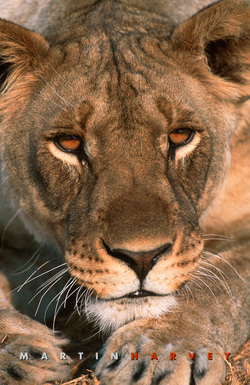
Big Business routinely occupies and controls its regulatory structures, after all.
Think of the Big Banks and the revolving door between them and banking regulators.
Think of the Tobacco industry, which occupied and controlled the regulatory body that concerned it, ie the Surgeon General's Office, until Robert Koop was appointed. Read his autobiography - he arrived to find that there was an office rule forbidding anyone from alleging that smoking was harmful to health.
The hunting industry has in my view adopted the same strategy - to invade and occupy conservation structures, thereby displacing real conservationists, who might pose a threat to their gruesome sport.
How do we know? Let’s examine the evidence:
First, the doctrine of Sustainable Use, adopted by South Africa via the Convention on Biodiversity. Who is responsible for an internationally accepted Policy that treats elephants as if they were bacteria - a mere resource to be ‘harvested sustainably?’ The IUCN, of course. Using their obscene wealth and disproportionate political power, the hunting fraternity successfully introduced and/or promoted the adoption by the IUCN of the doctrine of Sustainable Use, thereby displacing real conservation - the preservation of natural functioning ecosystems - with a policy which is just a licence to kill animals.
Just see how effective this strategy is; take one example. Currently, the EU Commission is considering whether to require hunters to apply for an import permit to bring their trophies in to the EU. Not a ban, just a permit. And the might of the IUCN - the World Conservation Union - has rallied to protect the hunters. Read Rosie Cooney’s input on behalf of the IUCN:
http://www.iucn.org/about/union/commissions/sustainable_use_and_livelihoods_specialist_group/sulinews/issue_6/sn6_trophyhunting/
When her abstract language is stripped down to bare essentials, all her complaints at the proposed permit requirement come down to this:- it would inconvenience the hunting industry.
Second, the TOPS regulations. Unbelievably, hunting organisations are granted self-government. They can themselves: –
‘define criteria for the hunting of listed threatened or protected species in accordance with the fair chase principle;’
What does this legal verbiage mean?
It means that the hunting industry is allowed to regulate itself, to decide for itself what is ethical. And its decision has the force of law. The very industry which has so ill-treated wild animals has been given the power to decide how the animals should be treated. Like giving paedophiles the right to decide what they can do to children.
Thus, the Norms and Standards for Hunting Methods, published in 2011, allow hunters to shoot Cape buffalo with a bow and arrow, so long as:
i. the kinetic energy of the bow should be at least 80 ft/lbs; and
ii. the arrow weight should not be less than 750 grains.
Third, why are so many conservation officials themselves professional hunters? How can a PH who has a financial interest in the very industry he is supposed to control, possibly avoid a conflict of interest?
And how do we know that hunters are given carte blanche to kill? Let’s look at the annual provincial Hunting Proclamations - which are supposed to limit the numbers of birds and animals hunted.
Hunting Proclamations.
The annual hunting proclamations are a death list prepared by SA provincial officials and published every year, ostensibly to regulate sport hunting. There is no science- backed knowledge of the numbers of species who cling precariously to survival, so by law, officials ought to write ‘data deficient’ opposite every listed wildlife species, and then use the cautionary rule to impose a moratorium on all hunting in the province, until the numbers of wildlife populations have been accurately determined.
Instead, conservation officials pander to the hunting fraternity, irresponsibly setting grotesquely excessive daily bag limits.
A daily bag limit of 40 pigeons over a Cape hunting season allows each individual hunter an annual bag of 14,600 pigeons. 40 pigeons a day! And that is just one example. Most species are not even protected during the breeding season. Animals such as Caracals, Vervets and Baboons, who should by law be protected, may be hunted without limit all year round.
The departments’ excuse for proposing excessive daily bag limits for all species, is that they should “not legislate for the ruthless animal exploiters and swindlers, but rather for the responsible majority of landowners” who will naturally exercise restraint and therefore do not need to be controlled. Carte Blanche for animal abusers is therefore the philosophy that underlies the Hunting Notice.
This philosophy is patently absurd. Think about it for a minute. It is like arguing that we should legalise bank robberies, because the responsible majority will not rob banks anyway. If we advanced such an insane reason for legalising bank robberies, intelligent people would conclude either that we were mentally defective, or, if not, then we must surely be bank robbers trying to advance our commercial interests. We do not think that Conservation officials are mentally defective. We draw the alternative conclusion: that Nature Conservation in SA is owned or controlled by, the hunting industry.
Finally, there are statements made to me personally over the years by some conservationists who are acutely unhappy about the extent of control over all conservation issues by the vocal, wealthy hunting minority.
So there it is: enough evidence for me to form the opinion that Big Hunting has invaded and occupied our conservation structures.
SA desperately needs a major shake-up of staff and policies in Conservation departments, bringing in competent people who are dedicated to protecting our wildlife heritage, and breaking the stranglehold of the hunting fraternity.
Why is the taxpayer funding Conservation services which serve no useful conservation purpose but, rather, choose instead to facilitate hunting? Most taxpayers are trusting - they expect their taxes to go into wildlife protection, not in to a protection racket for the hunting industry.
